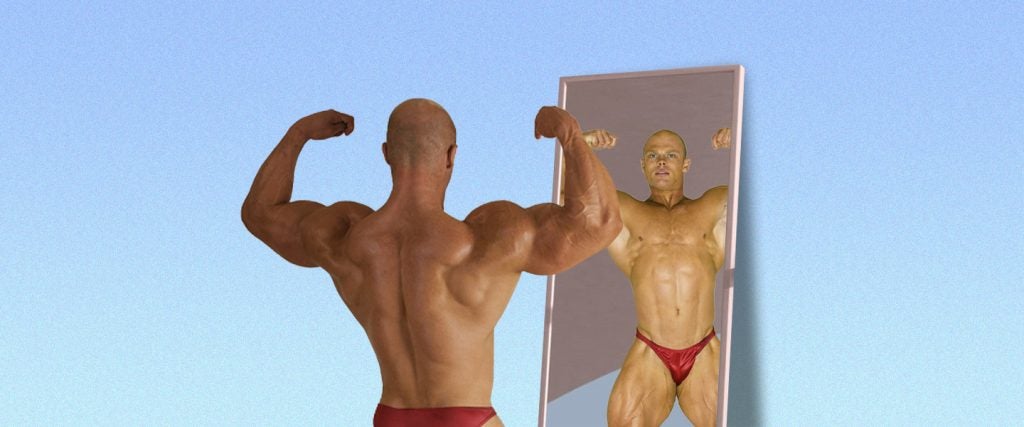If you’ve never spent much time in a weight room, I can understand why you might believe that the mirrors are there exclusively for vanity purposes. Seriously, how tragic would it be if a surge of iron-borne blood caused dam-bursting levels of swoleness while no one was present to visually appreciate its majesty? I mean, if a bicep pumps in the gym and no one is there to see it, does it truly stretch a shirt sleeve?
Setting aside the intricate metaphysical philosophies of bro science momentarily, mirrors are essential for multiple reasons during weight training, not the least of which being you can’t always trust the positioning of your body based on the way things inherently feel. Your triceps may seem like they’re remaining parallel to the ground and elevated higher than the rest of your body while you’re cranking out tricep kickbacks, but an imperceptible dip toward the ground can blunt their effectiveness. However, if you can visually verify such a flaw in a mirror, you can account for it in real time, correct it and maximize the effectiveness of the exercise.
But in terms of replicating these kinds of visuals at your home “gym,” how should you go about selecting an ideal mirror that will provide your physique with a worthy reflection?
Exactly — what type of mirror should I choose if I’m not working out at a professional gym?
I’m going to assume that you don’t require a mirror to also act as the conduit through which your workout is presented, so we can bypass any of the growing number of reflective LCD screens that function secondarily as mirrors, but which can be accessed to receive workout instructions, and some of which double as literal storage closets for training gear. Suddenly, it’s becoming a quaint notion that a modern mirror would simply reflect light and images, and wouldn’t be expected to project images at you from another dimension.
Outside of the more futuristic, multimedia options, you can effectively bifurcate training mirrors into two categories — portable and wall-mounted. After which, it becomes a matter of whatever size your exercise space requires and personal convenience.
Okay, but what factors should help me identify the right mirror for me?
Realistically, whether your mirror is portable or wall-mounted, it needs to be full-length, displaying your body from head to toe. Think about it: Do you really want to be required to change the elevation of your mirror — propping it on top of a dresser or placing it back down on the carpet — depending upon the orientation of your body from moment to moment during your workout? Of course not. And so, full-length mirrors are a must.
Second, unless you live alone and can always guarantee your ability to exercise in the same spot in the same room at all times, it’s helpful to own a mirror with some significant width to it. Because the wider the mirror, the greater the amount of activity it can capture and reflect back to you. (This also typically means a wall-mounted mirror is the best choice.)
Fortunately, even if you want to mount enough mirrors on your wall to ensure that no movement within your room escapes your notice, you can do so for far less than the cost of one of the relatively slender LCD monitor devices. In fact, you can mount a single four-by-eight-foot activity mirror on your wall for well under $700, or also link multiple mirrors together to achieve a similar result.
Either way, as physically self-aware as you may believe yourself to be, a mirror helps you to eliminate all doubts. You might think that you’re doing everything correctly during your workout, but seeing is believing. And if the presence of a mirror can prevent you from wasting reps, it’s well worth the investment. After all, the benefit of having your own image reflected back toward you is likely to be reflected in the quality of your workout, too.

